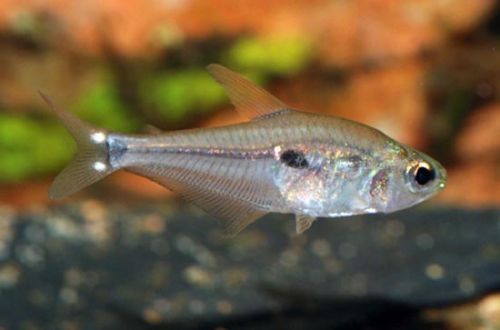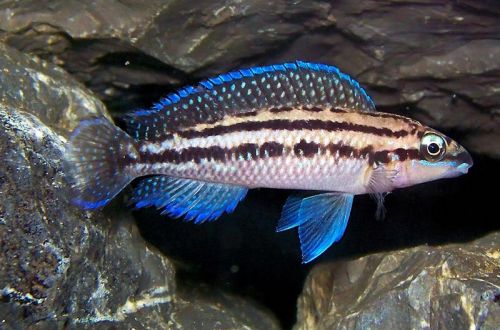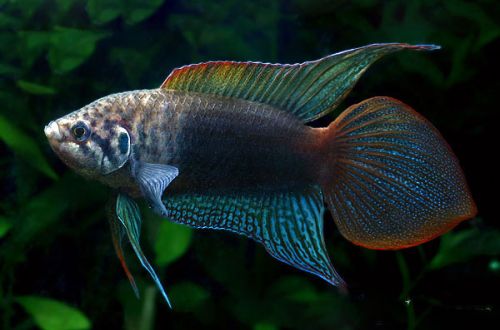
six-eyed tetra
Finacogaster Tegatus or Sheti-eyed tetra, the scientific name Phenacogaster tegatus, belongs to the Characins (Characin) family. Outwardly, it does not stand out much from the background of other Tetras due to its modest color, therefore it is not so common. It is considered easy to keep and breed, compatible with other peaceful fish species. May be recommended for beginner aquarists.

Contents
Habitat
It comes from South America from the Paraná river basin and its largest tributary Paraguay. The natural habitat covers the territory of the state of the same name – Paraguay, as well as the southwest of Brazil and the northern provinces of the northeast of Argentina. The fish inhabits small streams and tributaries, preferring areas with clear running water and dense aquatic vegetation.
Brief information:
- The volume of the aquarium – from 40 liters.
- Temperature – 20-28°C
- Value pH — 6.0–7.5
- Water hardness – 1–12 dGH
- Substrate type – any
- Lighting – subdued
- Brackish water – no
- Water movement is weak
- The size of the fish is 3–4 cm.
- Food – any food
- Temperament – peaceful
- Keeping in a group of 8-10 individuals
Description
Adult individuals reach a length of 3–4 cm. Sexual dimorphism is weakly expressed, males and females are practically indistinguishable from each other. The coloration is gray, the integument of the body is translucent and through them the ridge of the fish is sometimes noticeable. A characteristic feature is the presence of two black dots: the first is located in the middle of the body, the second is at the base of the tail. In shape and size, they resemble eyes, which is reflected in the colloquial name of this species – Six-eyed tetra. This means two points on each side and a pair of eyes.
Food
An omnivorous species, in a home aquarium it will accept a variety of foods of a suitable size. The daily diet can consist exclusively of dry food in the form of flakes, granules. Variety is encouraged to include live or frozen invertebrates such as brine shrimp, daphnia, bloodworms, etc.
Maintenance and care, arrangement of the aquarium
The optimal size of the aquarium for a group of 8-10 fish starts from 40 liters. The design usually uses sandy soil, a few snags and aquatic plants arranged in groups to leave free areas for swimming.
The content of Finacogaster Tegatus will not cause great difficulties. It is necessary to ensure stable water conditions within an acceptable range of temperatures and hydrochemical values, which is achieved by installing a productive filtration system and carrying out regular aquarium maintenance procedures. The latter include weekly replacement of part of the water with fresh water, timely removal of organic waste, equipment maintenance, etc.
Behavior and Compatibility
Peaceful schooling fish, it is recommended to maintain a group size of at least 8-10 individuals. Compatible with other non-aggressive species of comparable size from tetras, zebrafish, rasboras, non-predatory South American cichlids and others.
Breeding / breeding
The breeding strategy is similar to most tetras. During spawning, the fish scatter hundreds of eggs among plants or directly above the ground surface. The process is largely disorderly, so the eggs can be scattered throughout the entire area, and accordingly, not all will be fertilized. Parental instincts are not developed, the fish do not care about the offspring, and on occasion they will definitely try to eat it. If breeding is planned, then the eggs should be moved to a separate tank with identical water conditions.
Fish diseases
Hardy and unpretentious fish. If kept in suitable conditions, then health problems do not arise. Diseases occur in case of injury, contact with already sick fish or significant deterioration of the habitat (dirty aquarium, poor food, etc.). Read more about symptoms and treatments in the Aquarium Fish Diseases section.





